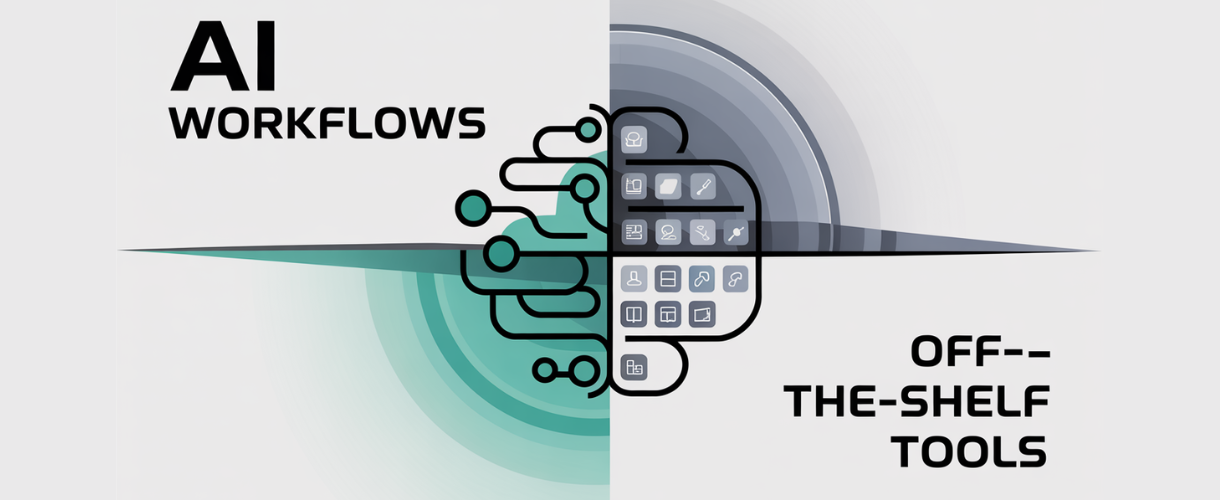You’ve invested in a shiny new productivity app, but your team still spends hours each week wrestling with spreadsheets, juggling email threads, and manually entering data. You’re not alone. The issue isn’t a lack of technology. It’s the mismatch between generic off-the-shelf tools and your specific business needs. Many organizations end up duct-taping different platforms together, only to discover they’ve created more complexity rather than clarity.
That’s where the conversation around AI Workflows vs Off-the-Shelf Tools becomes critical. This blog will help you understand the strengths and limitations of each approach, show you how AI workflows can solve problems that generic tools can’t, and help you make the best choice for your business. We’ll also share real-world use cases, expert insights, and guidance on how Kuhnic supports you in building smart, scalable AI-powered systems.
What Are AI Workflows?
AI workflows are automated, intelligent processes customized for your business. They use machine learning, natural language processing, and rule-based systems to understand, decide, and act on tasks—often faster and more accurately than humans.
Unlike generic tools, AI workflows are purpose-built. For instance, instead of using a CRM plugin that “kind of” tracks leads, an AI workflow can integrate email parsing, lead scoring, and auto-responses tailored to your exact criteria. According to Gartner, by 2025, 70% of enterprises will have adopted AI to automate business processes, up from 40% in 2022.
The Case for Off-the-Shelf Tools
Off-the-shelf tools are pre-built, plug-and-play applications. Think Slack, Trello, or HubSpot. They’re widely adopted for good reason:
Fast deployment
Lower upfront costs
User-friendly interfaces
Large communities and support
But they’re not built for flexibility. You often end up adapting your process to fit the tool, rather than the other way around.
Example: A logistics company might use a standard inventory tool but still require manual syncing between order tracking and delivery planning, leaving room for human error and wasted time.
Ready to Optimize Your AI Strategy?
AI Workflows vs Off-the-Shelf Tools: Key Comparisons
1. Customization & Flexibility
AI Workflows: Fully customizable to fit unique business needs, allowing modifications as requirements evolve.
Off-the-Shelf Tools: Limited to preset features; little to no flexibility for deep customization.
2. Integration with Existing Systems
AI Workflows: Built to seamlessly integrate with legacy software, CRMs, ERPs, and proprietary databases.
Off-the-Shelf Tools: Often face compatibility issues, requiring workarounds or additional middleware.
3. Cost Structure
AI Workflows: Higher initial investment but lower long-term costs (no recurring licensing fees).
Off-the-Shelf Tools: Lower upfront cost but can become expensive with scaling (subscriptions, add-ons).
4. Performance & Accuracy
AI Workflows: Trained on company-specific data, leading to higher accuracy for niche tasks.
Off-the-Shelf Tools: Generalized models may underperform in specialized industries (e.g., healthcare, manufacturing).
5. Scalability
AI Workflows: Designed to grow with your business, handling increased data loads and complexity.
Off-the-Shelf Tools: May hit usage limits, forcing upgrades or switching platforms.
6. Maintenance & Updates
AI Workflows: Requires internal or vendor-managed updates but allows control over changes.
Off-the-Shelf Tools: Automatic updates can disrupt workflows or remove preferred features.
7. Data Privacy & Security
AI Workflows: Data stays in-house or in controlled environments, critical for compliance-heavy sectors.
Off-the-Shelf Tools: Often rely on third-party servers, raising risks for sensitive data.
8. Time-to-Deployment
AI Workflows: Longer setup (weeks/months) but optimized for long-term efficiency.
Off-the-Shelf Tools: Instant deployment but may lack depth for complex needs.
When to Choose AI Workflows Over Off-the-Shelf Tools
Here’s when AI workflows are the better choice:
Complex Business Logic: Your operations don’t follow a standard process.
Data-Heavy Tasks: You need insights from massive datasets.
Process Redundancy: Teams repeat tasks that could be automated.
Growth-Driven Goals: You’re scaling and can’t afford inefficiencies.
Legacy Tool Frustration: You’re constantly switching between tools that don’t talk to each other.
AI workflows solve these pain points by delivering intelligent, centralized automation that evolves with your business.
AI Workflows vs Off-the-Shelf Tools: How Kuhnic Can Help
Kuhnic specializes in helping businesses navigate the complex decision of AI Workflows vs Off-the-Shelf Tools. Our experts assess your needs, map your processes, and recommend the right blend of speed, scalability, and customization. Whether you need a quick win or a strategic AI transformation, Kuhnic delivers solutions that grow with your business.
Take the Next Step with Kuhnic
Ready to unlock the full potential of AI for your business? Contact us to connect with an expert and get started with Kuhnic. Our team will help you assess your needs, design the right solution, and ensure your investment in AI delivers lasting value. Explore our solutions or see real-world case studies.
Conclusion
We’ve explored what defines AI workflows and off-the-shelf tools, comparing their benefits, limitations, and use cases. While off-the-shelf tools are accessible and quick to deploy, their lack of flexibility becomes a constraint as businesses grow. In contrast, AI workflows offer a tailored, scalable, and intelligent solution to modern challenges—particularly for data-heavy, process-driven environments.
If you’re tired of adapting your business to fit tools and are ready to build tools that fit your business, it’s time to rethink your approach.
Contact us to connect with an expert and get started with Kuhnic. We’re here to help you assess where AI can add value and design workflows that work for you.
FAQs
1. What’s the main difference between AI workflows and off-the-shelf tools?
AI workflows are custom-built systems that automate and optimize processes using artificial intelligence. Off-the-shelf tools are pre-made applications with general features. Kuhnic specializes in building AI workflows tailored to your business needs, unlike rigid, one-size-fits-all tools.
2. Are AI workflows only for large enterprises?
Not at all. Kuhnic helps businesses of all sizes, especially those scaling quickly, by providing modular AI workflows that grow as you do. Even small businesses can see significant ROI with targeted automation.
3. How long does it take to implement an AI workflow with Kuhnic?
Implementation time varies based on complexity. However, Kuhnic’s agile development model typically delivers a functional MVP within 3–6 weeks, with full deployment in under three months.
4. Do I need to replace my current tools to use AI workflows from Kuhnic?
No. Kuhnic integrates AI workflows with your existing stack. We enhance your current systems rather than replace them, ensuring a seamless transition and minimal disruption.
5. How does Kuhnic ensure data security in AI workflows?
Kuhnic adheres to industry best practices in data encryption, access control, and compliance (HIPAA, GDPR, etc.). Our AI workflows are designed with security and transparency as top priorities.




